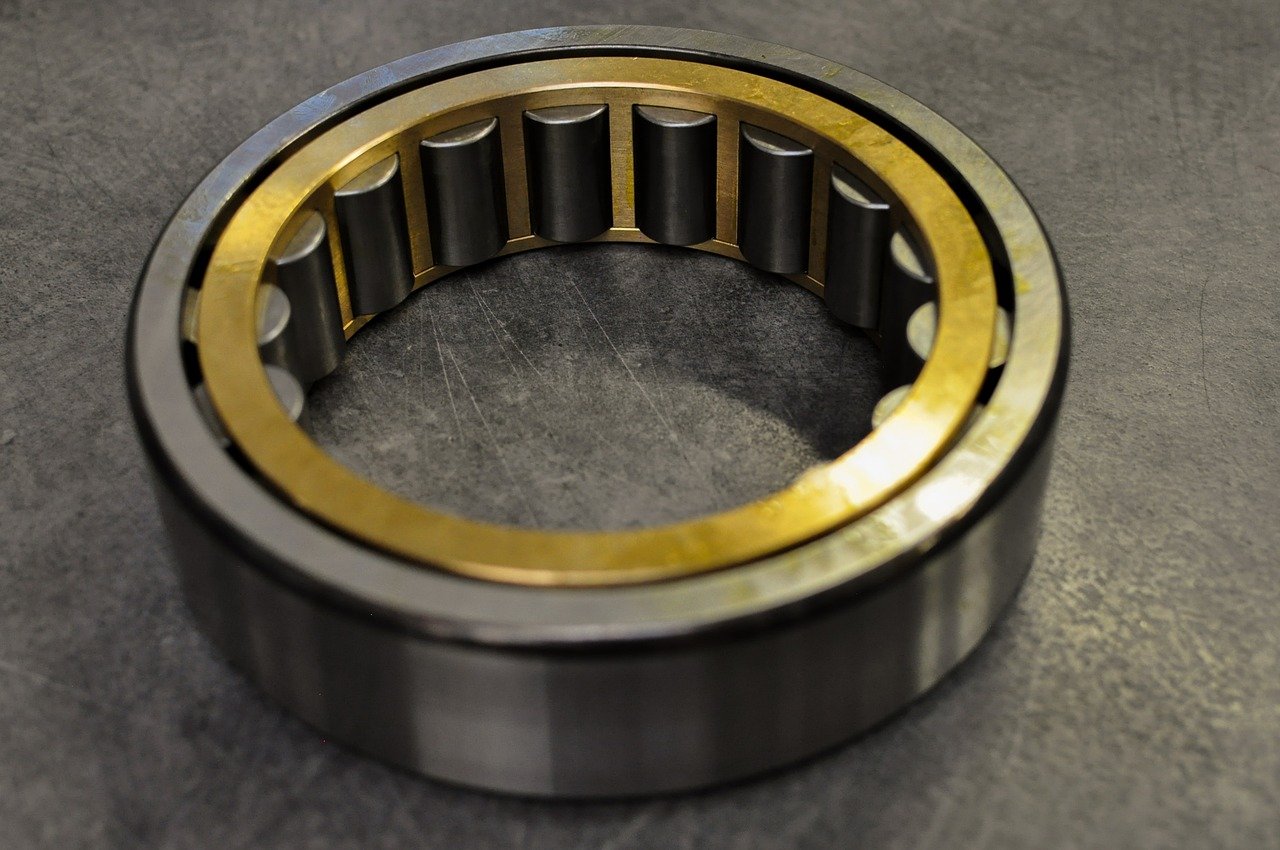By their name, self-lubricating bearings do not require grease or oil lubricants during operation.
SELF-LUBRICATING BEARINGS – HOW DO THEY WORK?
As a result, self-lubricating bearings are often referred to as greaseless or maintenance-free bearings since they don’t need to be relubricated or otherwise maintained.
In general, self-lubricating bearings aren’t the same as bearings that come pre-lubricated with grease or oil – these bearings are called prelubricated bearings. Bearings that have been prelubricated will need relubrication at some point during their service life.
Typically, self-lubricating bearings work by lubricant being injected into the bearing’s sliding layer. Depending on how well the lubricant performs in particular conditions (such as temperature), it can either be liquid (oil) or solid (graphite, MoS2, lead). Through the pores in the sliding layer, lubricant is released onto the bearing surface, lubricating it. Whenever the sliding layer is worn, the lubricant does not disperse uniformly throughout the layer and thus the performance of the low friction bearing remains unchanged. The lubricant is usually impregnated on top of a “running-in” surface that provides low friction bearing performance at the time of start up before it reaches the bearing surface.
SLEEVE BEARINGS
Sleeve bushing bearings (also known as bushings, journal bearings, or plain bearings) provide linear movement between two parts.
Bearing sleeves consist of metal, plastic, or composite resin sleeves that absorb friction between two moving parts and reduce vibrations and noise.
Among the advantages of sleeve bearings are lower cost, reduced maintenance, a reduction of noise at low speeds, and easy installation. Furthermore, sleeves offer a higher load capacity and are particularly shock-resistant thanks to their larger contact zone. With a conformal liner, the sleeve bearings compensate for alignment irregularities and dampen vibrations. The one-piece bearings reduce housing dimensions and weight by having thin walls.
Sleeve bearings are available in bronze, steel and stainless steel. In addition to bearings made of brass, even plastic sleeve bearings are manufactured for certain applications. Bronze sleeve bearings, which sometimes come with lubricant plugs (PTFE or graphite) to help with lubrication problems, are one type of sleeve bearing used for applications requiring constant lubrication. Another sleeve material developed for light to medium applications, oil impregnated bronze sleeve bearings, contain pores that allow oil to be absorbed by the bearing then released when a force is applied.
In the bearing world, flanged and cylindrical sleeve bearings are common. An flanged sleeve bearing provides a bearing surface at one end of the sleeve that supports an axial load, while a cylindrical bearing is flush with its outer and inner diameters and is mounted inside a housing.
How are sleeve bearings and ball bearings different?
When it comes to the differences between ball and sleeve bearings, it is important to understand their uses before choosing the best one. Both of these products are commonly used, but it is important to select the one that matches your needs.
The cost of using sleeve bearings is lower than that of using ball bearings. Mounting and installation are limited to the horizontal direction, however, to minimize friction. Sleeve bearings perform optimally at low temperatures, that is, below 70 °C, and have a short service life. Among their many benefits, these bearings have the advantage of being relatively quiet at low speeds. If the application does not have a very long life expectancy, these cheap bearings are perfect for applications with low speeds and low temperatures.
